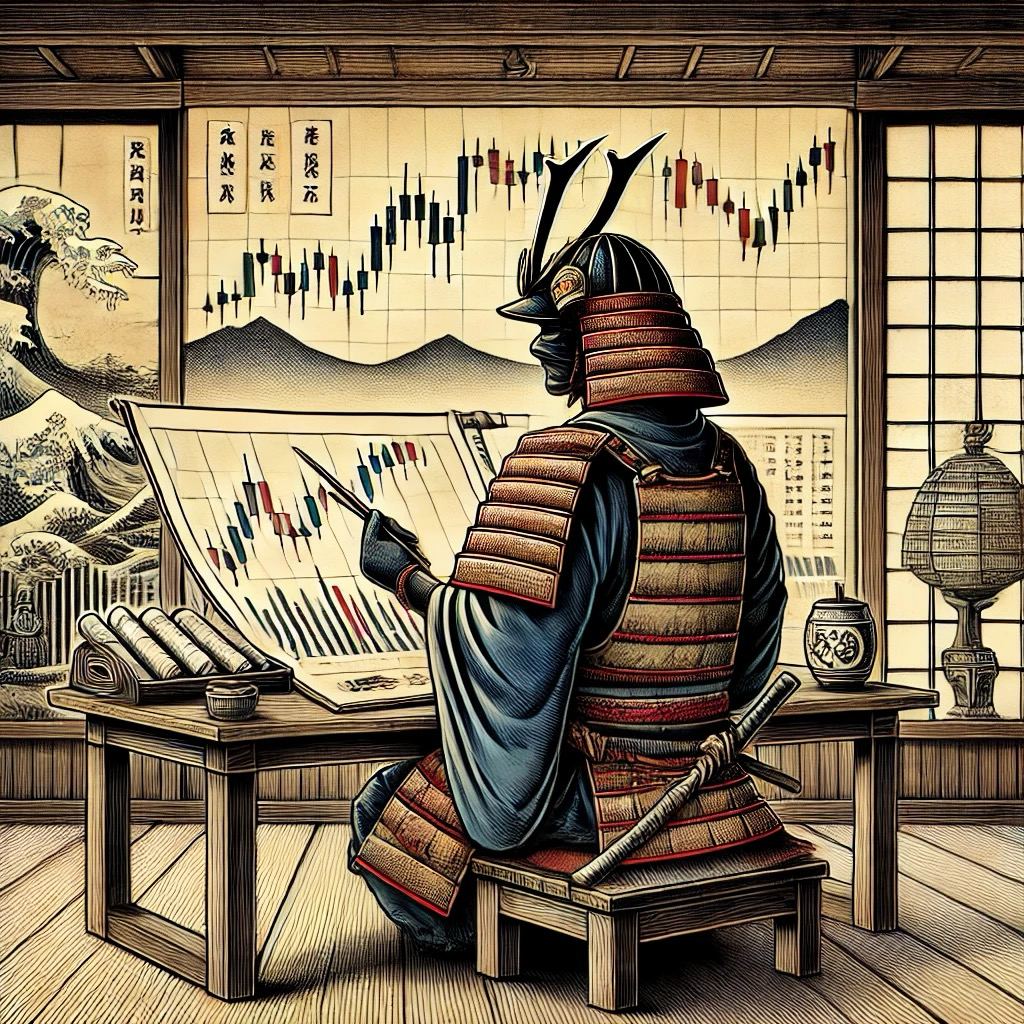Learn Trading for Free and Without Registration
An Online Glossary to Study Trading Independently
Japanese Candlesticks. Summary
Japanese Candlesticks and Candlestick Patterns: Pros, Cons, and Applications

Japanese candlesticks are among the most popular tools for graphical analysis, widely used by traders to assess price movements. Invented by Japanese rice merchants in the 17th century, this tool has become a cornerstone of modern technical analysis due to its versatility and simplicity. Candlestick patterns are combinations of Japanese candlesticks that help predict possible market movements.
Let’s explore the advantages and disadvantages of this tool, where it works best, and where its effectiveness may be limited.
Advantages of Japanese Candlesticks
-
Clarity and Easy Interpretation
Japanese candlesticks provide comprehensive information about price movements during a specific period: opening price, closing price, highs, and lows. This structure makes it easy to understand market dynamics. -
Versatility
Candlesticks work across various markets:- Forex: Useful for analyzing currency pairs.
- Cryptocurrency Market: Highly effective in visualizing volatile price swings.
- Commodities Market: Ideal for tracking assets like oil, gold, and agricultural products.
-
Combination with Other Tools
Candlestick patterns complement support and resistance levels, indicators, and trendlines, making them a valuable addition to any trader’s toolkit. -
Applicable to All Timeframes
Candlesticks are effective across all timeframes—from minute-by-minute charts for scalping to monthly charts for long-term analysis. -
Rich Variety of Patterns
Patterns such as "Hammer," "Shooting Star," or "Doji" help identify key entry and exit points.
Disadvantages of Japanese Candlesticks
-
Context Dependency
The same pattern can mean different things depending on the market context. For instance, a "Hammer" pattern might give a false signal if it doesn’t occur near a critical level. -
False Signals
In highly volatile markets or on smaller timeframes, candlesticks can generate numerous false signals, potentially misleading traders. -
Subjectivity
Interpreting candlesticks often depends on a trader’s experience. Beginners might misidentify patterns or overlook crucial details. -
Reduced Effectiveness in Stock Markets
On stock markets, fundamental factors and broader economic conditions are more influential. Candlestick patterns may not provide clear signals in such environments. -
Lack of Volume Data
Candlesticks do not show trading volume, which can be critical for understanding the strength behind price movements.
Where Japanese Candlesticks Excel
-
Forex
Candlesticks are especially effective for analyzing currency pairs, as Forex markets operate almost 24/7. Patterns like "Engulfing" or "Harami" help identify trend reversals and continuations. -
Cryptocurrency Market
In the highly volatile crypto market, candlesticks are indispensable for spotting short-term reversals, especially when combined with support and resistance levels. -
Commodities Markets
For assets like oil, gold, and agricultural commodities, candlesticks offer a clear picture of supply and demand dynamics.
Where Candlesticks Are Less Effective
-
Stock Market
In stock trading, fundamental indicators such as earnings reports, revenue, and profit margins often overshadow technical patterns. Candlesticks may produce ambiguous signals, especially in long-term trends. -
Low-Liquidity Assets
On markets with low trading volumes, candlesticks can be unpredictable due to sudden price jumps caused by small trades.
Why Candlestick Patterns Are Less Effective Today
-
Algorithmic Trading
Modern algorithms process vast amounts of data in milliseconds, reducing the reliability of traditional patterns. -
Changing Market Structures
The growing number of market participants and the emergence of new asset classes have altered trading dynamics, decreasing the predictability of candlestick patterns. -
Widespread Use
The popularity of candlestick patterns has led many traders to follow identical signals, diminishing their effectiveness.
Summary
Japanese candlesticks are a powerful and versatile tool for analyzing markets, especially Forex, cryptocurrency, and commodities. They provide a visual representation of price movements and key decision points. However, candlestick patterns are not always accurate and require confirmation from other analytical methods.
Their effectiveness is reduced on stock markets and for low-liquidity assets, where fundamental factors dominate. The evolution of trading environments and the prevalence of algorithmic trading have also limited their reliability.
To successfully use Japanese candlesticks, it’s essential to understand their limitations, consider the market context, and integrate them with other tools for a comprehensive analysis.


